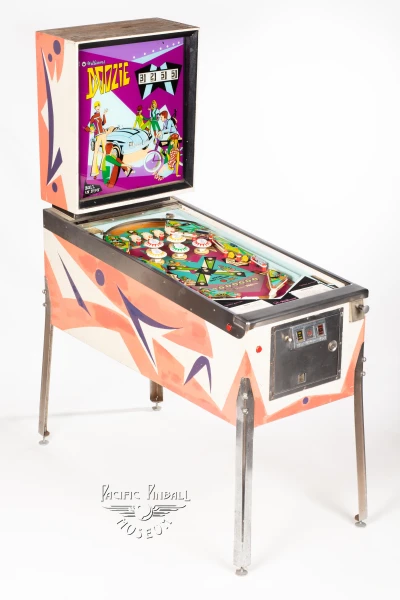Doozie
Doozie Preview Image

Machine Details
Manufacturer
n/a
Year
n/a
Technology Era
n/a
Machine Description
Content Under Review
Help us improve this content
Your support accelerates our content verification efforts.
Support Our WorkThe 'Doozie' pinball machine, released by Chicago Coin in the late 1960s, represents a classic example of electro-mechanical pinball design during a pivotal era in arcade gaming history. This period marked the twilight years of the electro-mechanical age, just before the solid-state revolution would transform the industry in the late 1970s.
The machine featured the characteristic artwork and styling of the late 1960s period, with vibrant colors and pop-art influenced design elements typical of the era. As an electro-mechanical machine, Doozie operated using relay switches, stepper units, and score motors - the traditional mechanical components that defined pinball machines of this generation.
While specific production numbers are not well documented, Doozie was manufactured during a period when Chicago Coin was still a significant competitor in the pinball market, though facing increasing pressure from industry leaders like Williams and Gottlieb. The game likely found homes in arcades, bowling alleys, and other entertainment venues of the late 1960s, where it would have competed for quarters alongside other popular amusements of the day.
As with many machines from this era, surviving examples of Doozie are now considered collectible pieces, representing an important chapter in pinball history when mechanical engineering and artistic design came together to create pure analog gaming experiences. The machine serves as a testament to the craftsmanship and innovation of the electro-mechanical era.